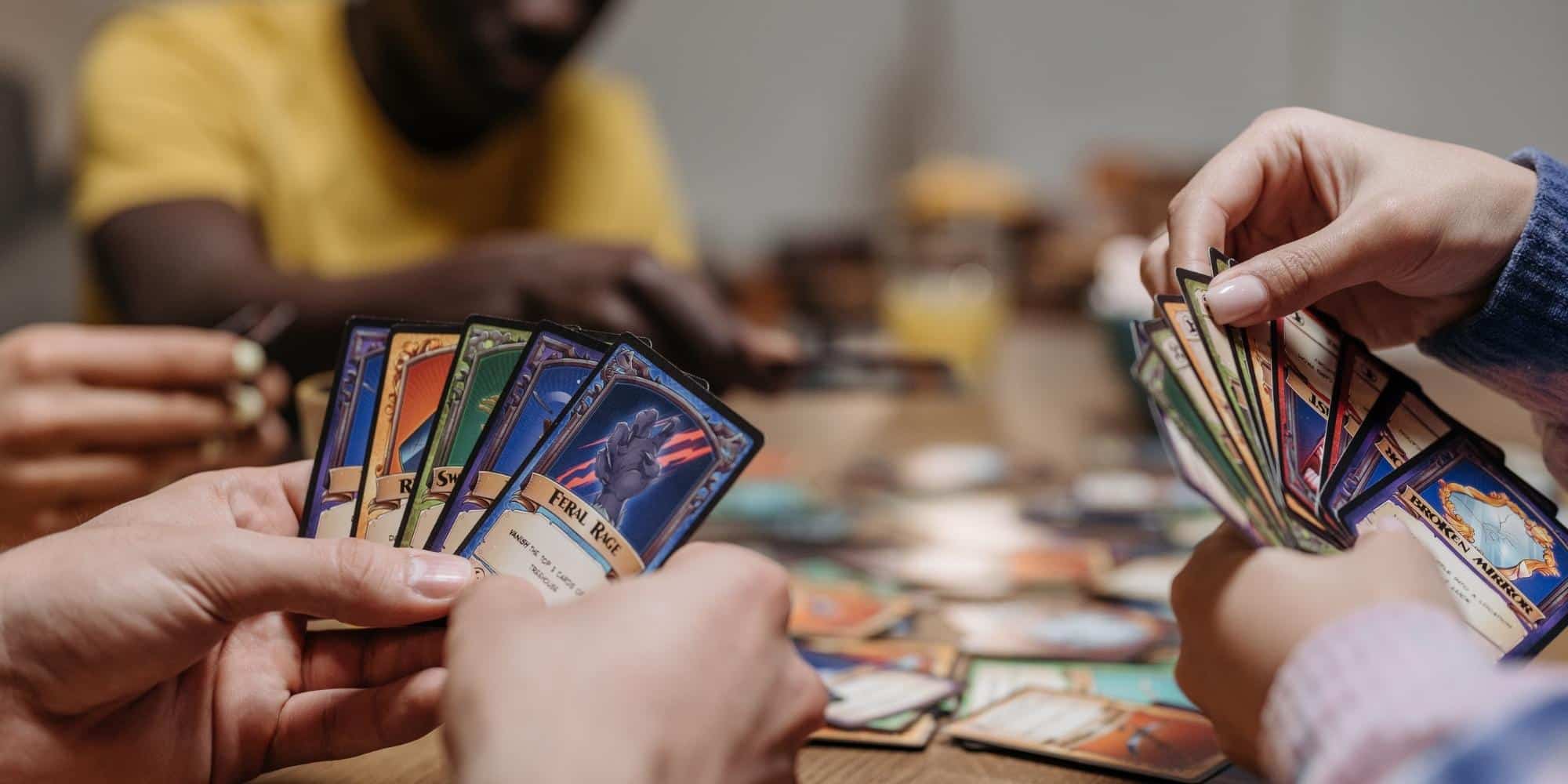
The campaign’s over, the funding goal is history, and the celebration was well-earned. But now you’re staring down the real challenge: kickstarter fulfillment. It’s not glamorous, but it’s absolutely critical. You’re not just shipping a product, you’re delivering on a promise. One that backers have been patiently (or anxiously) waiting months to see fulfilled.
Get this part right, and you’ll win loyal fans who rave about your brand. Mess it up, and it’s a fast track to refund requests, Reddit rants, and reputational damage. This guide is your roadmap through the maze, real talk, real strategies, and no sugarcoating.
Jump right in: Kickstarter Board Game Fulfillment
- Why Fulfillment Can Make or Break Your Campaign
- The Fulfillment Process: From Factory Floor to Backer Doorstep
- What to Look for in a 3PL for Kickstarter Board Games
- International Shipping: Handling Global Backers with Ease
- Packaging & Kitting: Making Unboxing an Experience (and Surviving Transit)
- Common Fulfillment Pitfalls (and How to Avoid Them)**
- How We Help Kickstarter Creators Win
- Summary
Why Fulfillment Can Make or Break Your Campaign
The fulfillment phase of a Kickstarter board game campaign carries immense weight, extending far beyond simple logistics. It represents the tangible delivery of the promise made to backers, and its execution profoundly impacts a creator’s reputation, financial viability, and long-term potential. In the unique ecosystem of crowdfunding, where backers often assume financial risk traditionally borne by publishers, the stakes for successful fulfillment are exceptionally high.
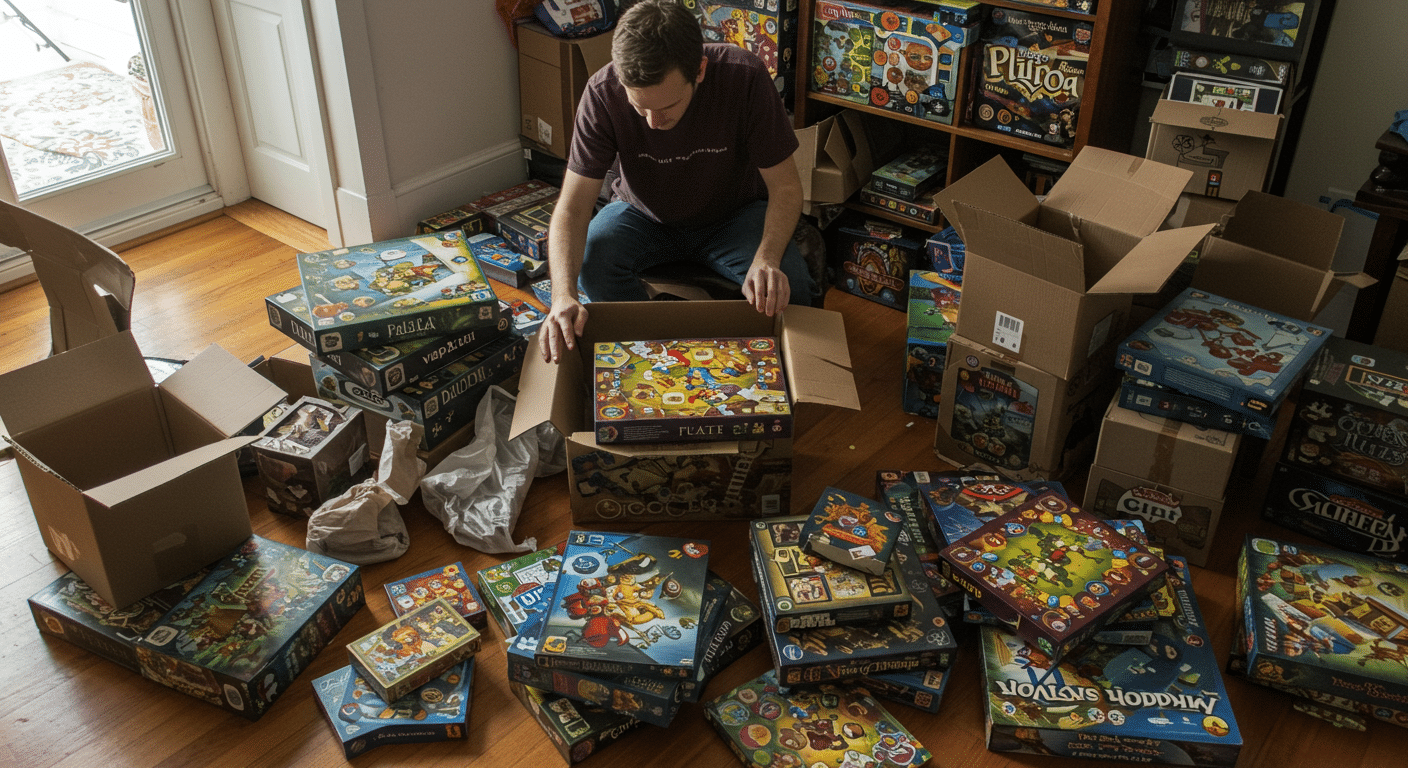
The High Stakes of Fulfillment: Where Things Can Go Very Right… or Spectacularly Wrong
Here’s the unfiltered truth: fulfillment isn’t just the final step in your Kickstarter journey, it’s the one that defines how people remember you.
Kickstarter is kind of a weird beast. Backers aren’t just customers; they’re early believers. They’ve paid upfront, waited patiently (or… not so patiently), and placed their trust in you to deliver something great. That trust? It’s fragile. And fulfillment is where it either solidifies or shatters.
It’s Not Just a Box, It’s a Promise
Unlike retail purchases, Kickstarter backers are basically pre-paying for a hope. A vision. Sometimes even vapor. So when their game finally shows up, weeks or months after the campaign, it better feel worth the wait. If it arrives late, damaged, or not at all? That warm fuzzy feeling they had about your brand quickly turns into cold skepticism.
You don’t get many second chances with fulfilling kickstarter rewards to backers.
Now, this is where it gets even trickier: the money you raised? A chunk of that, often the biggest chunk, goes toward fulfillment. We’re talking freight, customs, warehousing, pick and pack, postage, the whole logistical maze. Miscalculate any part of that, and your profit margins vanish. In some cases, you could even end up in the red.
And let’s not sugarcoat it, there are horror stories. Broken promises. Delays that stretch into oblivion. Creators ghosting their own campaigns because they’re overwhelmed or out of money. And unfortunately, it happens more often than you’d think. Roughly 84% of Kickstarter projects miss their original delivery window, and that statistic doesn’t exactly scream confidence .

When Fulfillment Fails: A Quick Snapshot of the Fallout
Let’s break down what’s really at risk if your fulfillment goes sideways:
- Reputation damage: Backers talk. And post. And leave comments. Kickstarter forums, Reddit threads, BoardGameGeek, your name can spread fast, for better or worse.
- Future campaigns suffer: If your first fulfillment goes poorly, your next campaign starts in a credibility hole. It’s tough to dig out.
- Financial chaos: Missed timelines often mean more storage fees, surprise customs charges, and re-shipping costs. That all adds up fast.
- Emotional burnout: This one’s rarely talked about, but it’s real. Trying to handle a fulfillment crisis on top of everything else? It’s exhausting, especially for small teams or solo creators.
So yeah, it’s high stakes. But here’s the twist: that’s also what makes getting it right so powerful.
When You Nail It, You Build Superfans
Smooth, on-time fulfillment with good communication doesn’t just “check a box.” It tells your backers: “Hey, you made the right call supporting us.” That moment when they open the package and everything’s there, beautifully packed and on time? That’s not just delivery, it’s validation.
Great fulfillment builds community. It’s your chance to show professionalism, gratitude, and maybe even a little personality (a cheeky thank-you note? People love that). For first-time creators especially, this part of the process becomes your unofficial resume. It shows backers, and future customers, that you’re capable, reliable, and worth supporting again.
Think of it as your season finale. Deliver a great ending, and they’ll be lining up for the next campaign premiere.
The Fulfillment Process: From Factory Floor to Backer Doorstep
From manufacturing to the moment your board game hits a backer’s doorstep, fulfillment is a multi-stage process with a lot of moving parts, and no, it’s not as simple as “just ship it.” Timing, accuracy, and coordination are everything. One hiccup early on? It ripples through the entire chain.
Think of this process less like a straight line and more like a Rube Goldberg machine. One piece triggers the next, and the stakes only get higher the further you go. So let’s walk through the big steps you need to master.

Step 1: Post-Manufacturing & Quality Assurance (QA)
Your manufacturer finished production. Great. But hold up, you’re not done yet.
Before anything ships, you’ll want to inspect, test, and double-check every detail:
- Run your own QA. Don’t just rely on the factory’s word. Review pre-production and final samples.
- Safety compliance matters. Especially if your game has toy-like components. U.S. regulations require ASTM F963; Europe? You’ll need EN71 certification for the CE mark.
- Get documentation. These tests cost a few hundred bucks, but skipping them could mean customs delays, or worse, seizure.
Messing this up leads to backers receiving broken, missing, or non-compliant products. And let’s be real, no amount of stretch goals makes up for disappointment.
Rewards Management doesn’t have to be a hassle.
Partnering with a kickstarter fulfillment service like eFulfillment Service means you can focus on growing your business while we handle the details. Request a Free Quote Today!
Step 2: Freight Forwarding – From Factory to Fulfillment Hubs
Now you’ve got thousands of games sitting on pallets. How do they get to your backers?
You book freight. Not FedEx overnight, think sea or air freight for bulk shipping. Here’s what to consider:
- Sea freight is cheaper but sloooow, 2 to 3 months, depending on port congestion.
- Air freight is quick (a few weeks), but expensive. Board games are heavy.
- Incoterms matter. These define who pays for what during transit. Common ones:
- EXW (Ex Works): You handle everything after pickup
- FOB (Free On Board): Factory gets it to the port, then it’s on you
- CIF/DDP: Factory covers freight, insurance, and sometimes even duties (if DDP)
Also, don’t forget the bill of lading. It’s your shipment’s official ID, don’t lose it.
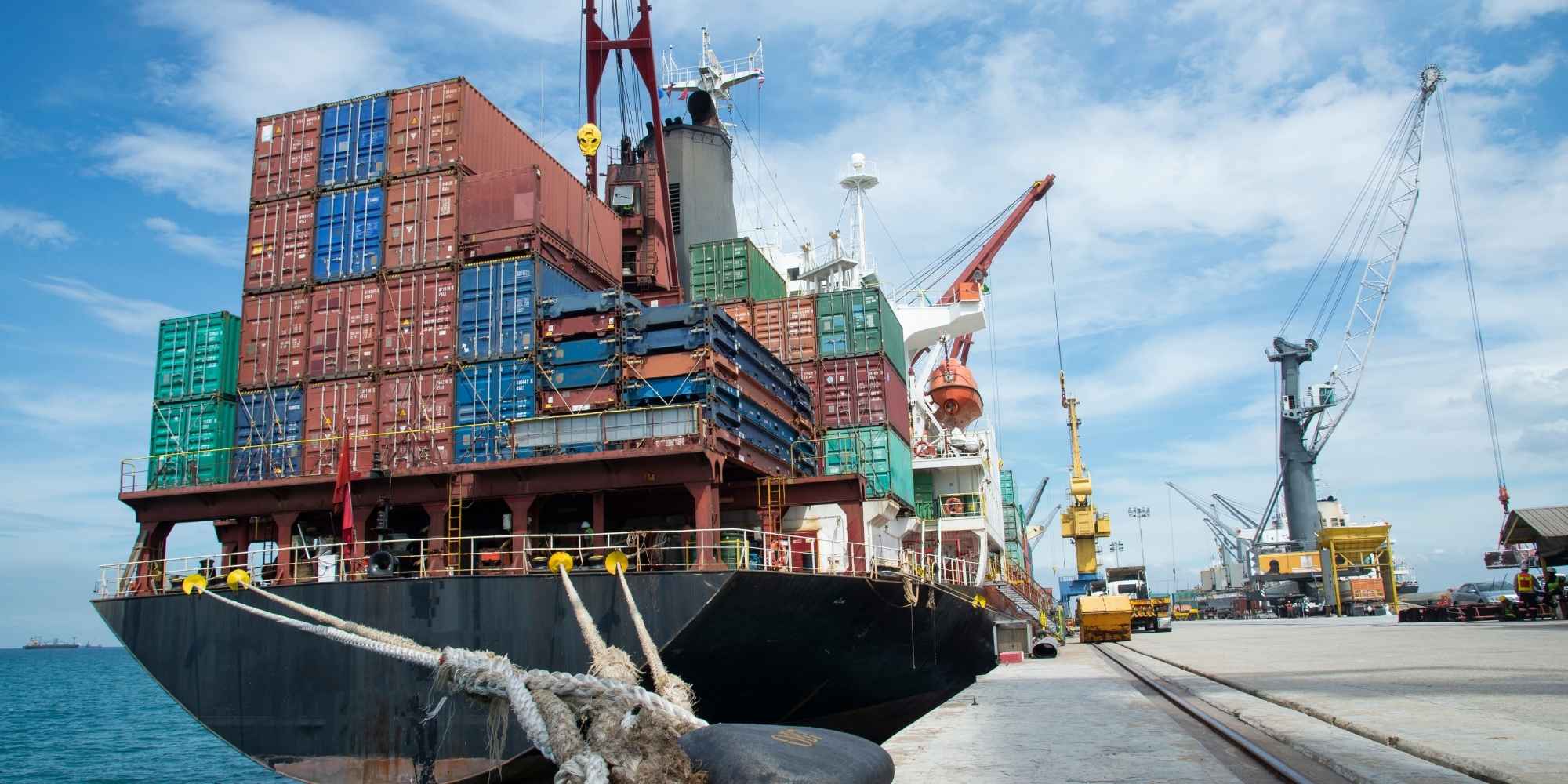
Step 3: Customs Clearance – Welcome to Red Tape City
Your games landed! But… not quite yet. Customs needs to inspect them first.
- You’ll pay duties and taxes. These are based on your product’s declared value and its HS (Harmonized System) code.
- In the EU or UK? Add VAT (value-added tax) on top of duties.
- Documentation needs to be spotless. One typo can cause massive delays.
The golden rule? Don’t try to DIY customs unless you know what you’re doing. Work with a broker, freight forwarder, or experienced 3PL who does this regularly.
Step 4: Warehousing & Receiving – The Calm Before the Shipstorm
Once your games clear customs, they go to a fulfillment center. Here’s what happens:
- You submit an ASN (Advanced Shipping Notice) or WRO (Warehouse Receiving Order)
- Inventory gets checked, logged, and stored
- Damage inspections are done (this matters, some shipments arrive beat up)
If you’re self-fulfilling from your garage? Hope you like climbing over boxes for the next two months.

Step 5: Backer Data Management – Getting the Details Right
Now the physical stuff’s in place, it’s time to prep the digital side. You’ll need to:
- Collect backer data, usually via pledge managers like BackerKit or PledgeBox
- Make sure you have full addresses, product selections, and phone numbers (some carriers require them)
- Format everything into a clean spreadsheet (usually CSV or Excel) for your fulfillment team
Bad data = wrong shipments = angry backers. Trust us on that one.
Lower Your Reward Shipping Costs with a 3PL.
Partner with eFulfillment Service to move inventory faster and free up cash flow. We help Crowdfunders optimize operations so products don’t sit on shelves. Request a Free Quote today!
Step 7: Last-Mile Delivery & Tracking – The Final Countdown
Backers love tracking numbers. Send them. Early and often.
Most fulfillment centers have tools that can automate this, but you should also:
- Email backers when their package ships
- Set expectations around delivery windows
- Communicate delays quickly and transparently
People can be patient, if they feel respected.
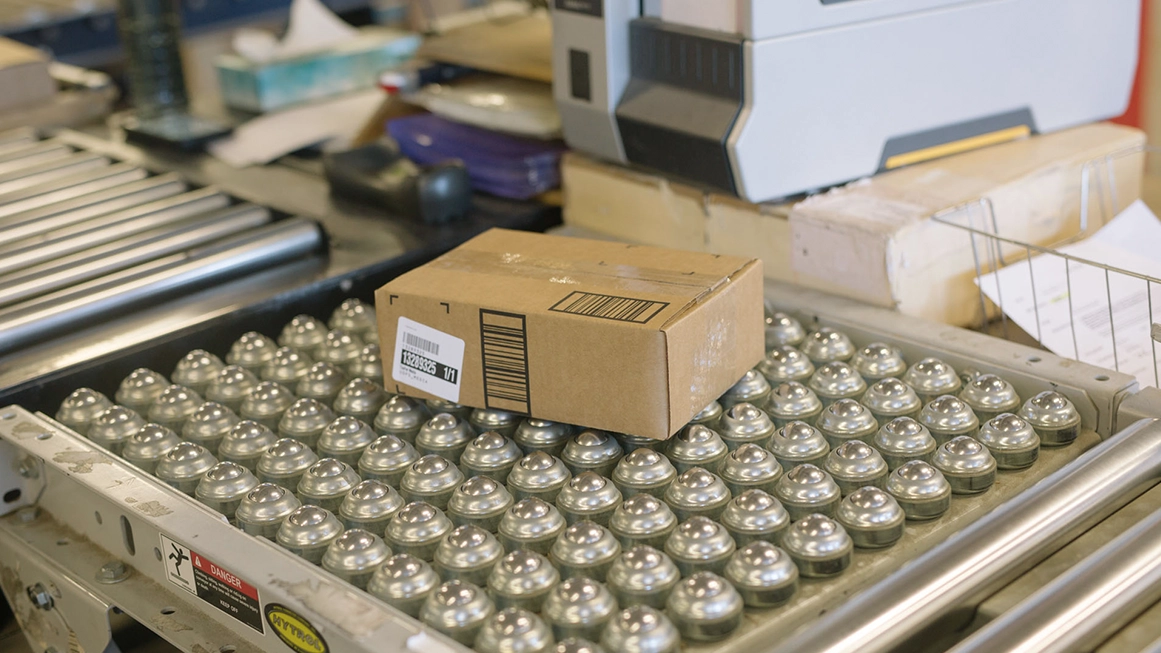
Step 8: Returns, Refunds, and Reality Checks
Even if everything went perfectly, stuff happens:
- Damaged games
- Lost shipments
- Address typos
Plan ahead. Build customer service into your post-campaign flow. And consider shipping insurance for higher-value shipments, it can save your budget from taking a hit.
See how connected this all is? A cut corner in manufacturing or missing Incoterm detail can come back to haunt you during customs or customer service. This is a process, not a checklist, and every part feeds the next.
What to Look for in a 3PL for Kickstarter Board Games
Once a Kickstarter campaign is funded, creators face a critical decision: handle the complex task of fulfillment themselves (DIY) or partner with a specialized Third-Party Logistics (3PL) provider. While DIY fulfillment is technically possible for very small campaigns, perhaps under 250 orders with primarily domestic backers , it rapidly becomes unmanageable. The process demands significant time for packing and shipping, requires substantial physical space for inventory storage , and often lacks the cost efficiencies and expertise offered by professional providers. For most board game Kickstarters, especially those with international backers or numerous components, partnering with a 3PL is the more scalable and often less stressful approach. However, choosing the right 3PL is paramount, as a poor choice can lead to disaster.
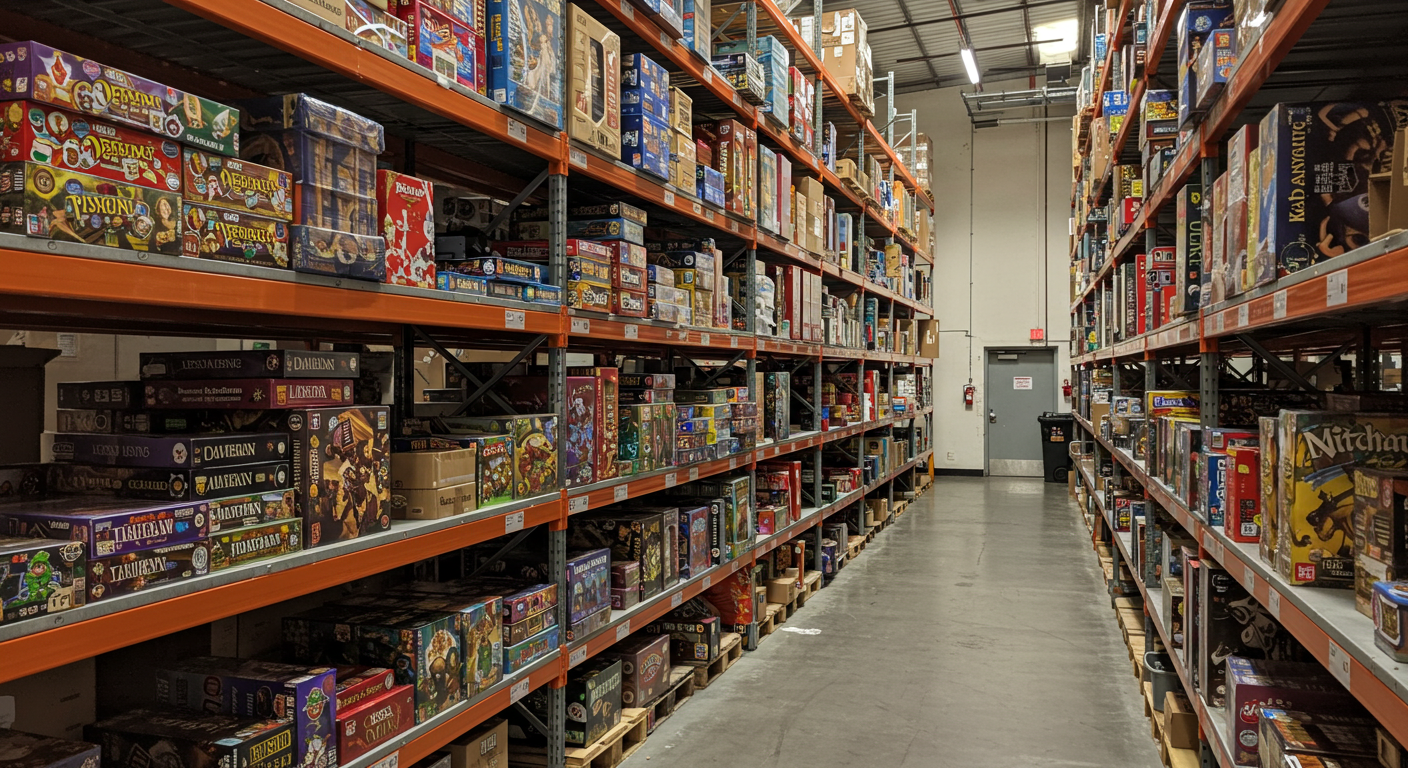
Key Evaluation Criteria for a Board Game 3PL
Selecting a 3PL requires careful vetting based on criteria specifically relevant to the unique demands of Kickstarter board game fulfillment:
1. Experience with Crowdfunding/Kickstarter:
This is non-negotiable. A 3PL familiar with Kickstarter understands its project-based nature, the surge in volume post-campaign, the common use of pledge managers (like BackerKit or PledgeBox), the importance of backer communication, and the potential for complexity with stretch goals and add-ons. They should be able to provide evidence of successfully handling similar campaigns, potentially through case studies or references.
2. Experience with Board Games/Similar Products:
Board games are often bulky, heavy, contain multiple components, and require careful handling to prevent damage. The 3PL should have experience storing, picking, kitting, and packing such items securely. They need to understand the implications of dimensional weight pricing and how to package games protectively yet efficiently.

3. Global Reach & Network:
Kickstarter campaigns attract a global audience. The ideal 3PL should offer efficient international shipping solutions. This often involves utilizing a network of regional warehouses (e.g., in the US, Canada, UK, EU, Australia, Asia) to facilitate “friendly shipping,” which helps manage customs/VAT and reduces shipping costs and transit times for international backers. Verify which regions they serve directly and which through partnerships.
4. Technology & Integration:
Modern fulfillment relies on technology. The 3PL’s system should ideally integrate seamlessly with popular pledge managers and potentially e-commerce platforms (like Shopify) if the creator plans ongoing sales. Real-time inventory visibility and order tracking capabilities are essential for both the creator and the backers.
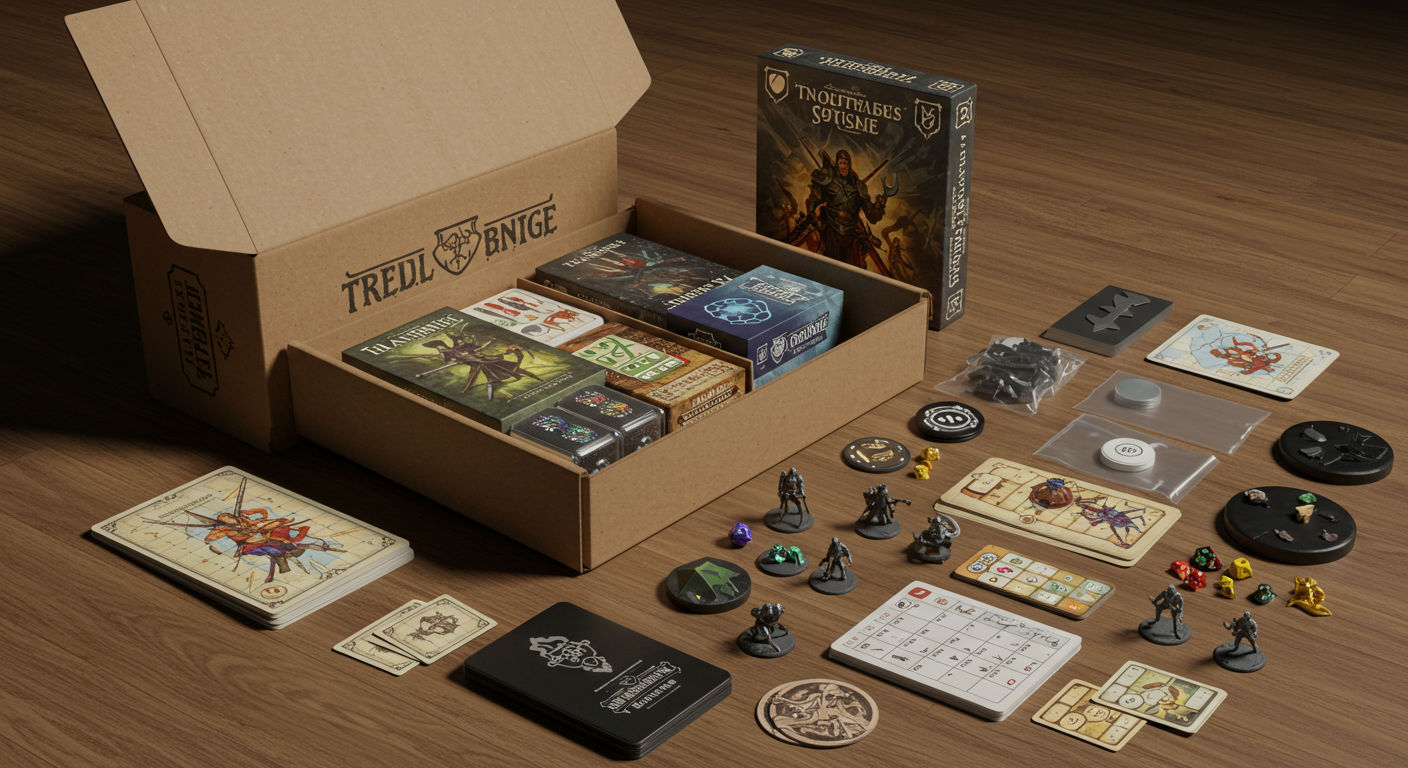
5. Kitting & Customization Services:
Board game Kickstarters frequently involve multiple SKUs per backer (base game, expansions, stretch goals, add-ons). The 3PL must have robust kitting services to accurately assemble these complex orders. Some 3PLs also offer custom packaging options, allowing creators to enhance their branding and the unboxing experience.
6. Scalability:
The chosen partner should be able to handle the initial campaign fulfillment volume efficiently but also possess the capacity and flexibility to support the creator’s future growth, whether through subsequent campaigns, direct web store sales, or even retail distribution. For smaller creators, it’s also important to check for minimum order requirements that might be prohibitive.
7. Pricing Structure & Transparency:
Fulfillment costs can be complex. Seek 3PLs that offer clear, transparent pricing for all services: receiving, storage (per pallet, per bin, etc.), order handling (pick/pack fees, often per order plus per item), kitting, packaging materials, and postage. Scrutinize quotes for potential hidden fees and ensure the pricing model is fully understood. Obtaining quotes from multiple providers is recommended for comparison.
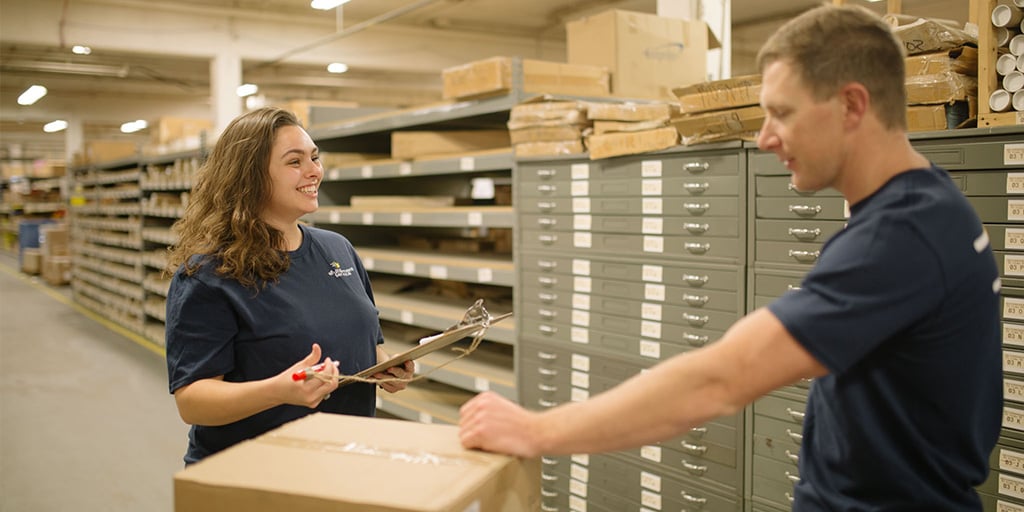
8. Communication & Support:
Effective fulfillment requires a strong partnership. Look for responsive customer service and, ideally, a dedicated account manager who understands the project’s specifics. Proactive communication, especially regarding potential issues or delays, is invaluable. Reading online reviews and even calling potential partners can help gauge their communication style and level of support.
9. Location(s):
The physical location of the 3PL’s warehouse(s) matters. Proximity to the manufacturing source (e.g., using a fulfillment center in China if manufacturing there) can reduce initial freight costs. Warehouses located near major shipping hubs or concentrations of backers can potentially lower last-mile delivery costs and speed. A network of strategically located international warehouses is key for global campaigns (see Global Reach).
10. Quality & Accuracy:
Errors in fulfillment (wrong items, incorrect addresses) are costly and damage reputation. Inquire about the 3PL’s accuracy rates (aiming for 99% or higher, as cited in) and their quality control processes during receiving, kitting, and packing.
To aid in this critical decision, creators can utilize a structured evaluation framework:
3PL Evaluation Checklist for Kickstarter Board Games
|
Criteria |
Importance (Low/Med/High) |
Questions to Ask |
|
Experience Fulfilling Kickstarter Rewards |
High |
How many KS campaigns have you fulfilled? Can you provide board game examples/references? Are you familiar with [Pledge Manager]? |
|
Experience with Board Games |
High |
Do you regularly handle board games? What are your processes for kitting multi-item orders? How do you protect games during packing/shipping? |
|
Global Reach / Hubs |
High (for Intl. Backers) |
Which regions do you ship to? Do you have warehouses in EU/UK/CA/AU/Asia? How do you handle “friendly shipping” (customs/VAT)? |
|
Technology / Integration |
Med-High |
What platform do you use? Does it integrate with? Do we get real-time inventory/order status? How is tracking shared? |
|
Kitting / Customization |
High |
What are your kitting fees? Can you handle complex orders (X SKUs)? Do you offer custom packaging/inserts? |
|
Scalability |
Med-High |
What are your order volume capacities? Are there minimums? Can you support ongoing e-commerce fulfillment? |
|
Pricing / Transparency |
High |
Provide a full breakdown: receiving, storage (per X), pick/pack (per order/item), kitting, materials, postage examples. Any hidden fees? |
|
Communication / Support |
High |
Will we have a dedicated contact? What are your response times? How are issues communicated/resolved? |
|
Location(s) |
Med |
Where are your warehouses located? How does this impact freight/shipping costs to our key backer regions? |
|
Quality / Accuracy |
High |
What is your order accuracy rate? What QC checks are in place? How do you handle fulfillment errors? |
While obtaining competitive pricing is essential, relying solely on the lowest quote can be a costly mistake. The research and case studies consistently underscore the value of qualitative factors. Poor communication, a lack of understanding of crowdfunding dynamics, inflexibility in handling unique project needs, or an inability to manage complex kitting can lead to significant delays, errors, hidden costs, and immense creator stress – issues that quickly negate any upfront price advantage.
International Shipping: Handling Global Backers with Ease
Kickstarter’s global reach is one of its greatest strengths, connecting creators with passionate backers worldwide. However, shipping physical rewards internationally introduces significant logistical hurdles, primarily revolving around variable costs, delivery times, customs regulations, and taxes. One of the quickest ways to sour a positive campaign experience is to surprise international backers with unexpected import fees upon delivery. Therefore, understanding and proactively managing international shipping complexities is crucial for maintaining backer satisfaction.

Understanding Customs Duties & VAT
When goods cross international borders, they are typically subject to two main types of charges:
- Customs Duties (Tariffs): These are taxes levied by the destination country’s government on imported goods. The rates vary widely depending on the country, the type of product (classified by an HS Code), and the value of the shipment. Many countries have a de minimis threshold, meaning duties are only applied if the shipment value exceeds a certain amount; however, these thresholds vary and can be low or non-existent for certain goods or countries.
- Value Added Tax (VAT): This is a consumption tax applied in the European Union, the United Kingdom, and many other countries worldwide. Unlike duties, VAT is typically applied regardless of the de minimis value for duties (especially following recent EU/UK rule changes). It’s calculated as a percentage (often around 19-21% or higher in Europe) of the total declared value, which usually includes the product cost plus the shipping and insurance costs. While legally considered a tax on the consumer, the responsibility for collecting and remitting VAT often falls on the seller (the creator or their fulfillment partner).
If these charges are not handled proactively by the creator, the delivery courier will typically require the backer to pay them (often along with an additional administrative or brokerage fee) before releasing the package. This can lead to significant unexpected costs for the backer – a $40 reward could easily incur $20+ in VAT and fees, effectively doubling the anticipated cost for the backer in some cases. Such surprises generate frustration and negative feedback, severely damaging the backer relationship.
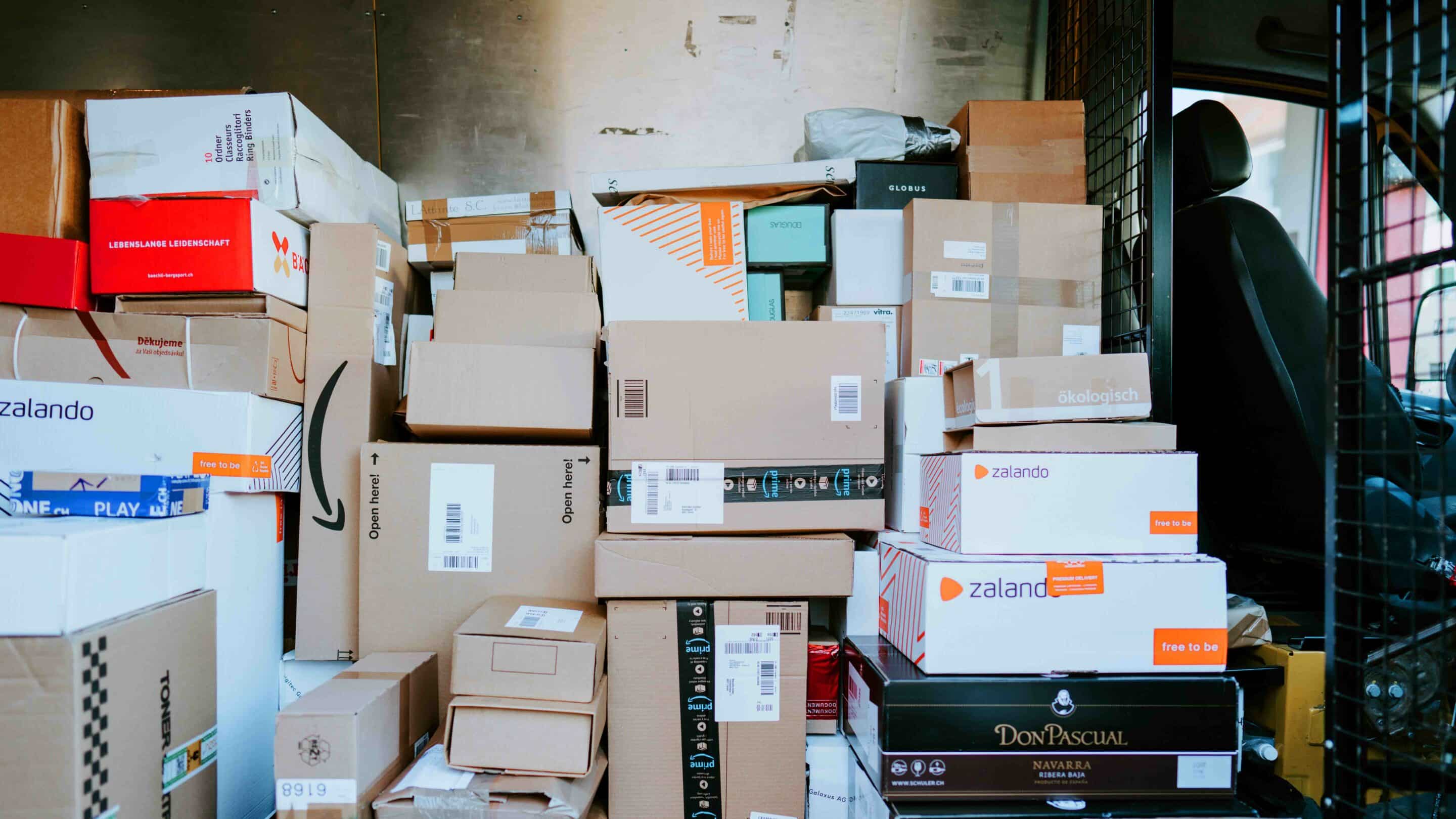
Strategies for “Friendly Shipping”
To avoid burdening backers with unexpected fees, creators often implement “friendly shipping” strategies. The goal is to manage duties and VAT in a way that the backer perceives the delivery as seamless, without additional charges upon arrival. Common approaches include:
1. Regional Fulfillment Hubs: This is the most prevalent method for achieving “friendly” shipping for board games. The creator ships bulk inventory to fulfillment centers located within key geographical regions (e.g., USA, Canada, UK, EU, Australia/New Zealand, Asia). The creator pays the necessary customs duties and VAT when the bulk shipment enters each region’s hub. Then, when individual orders are shipped from the regional hub to backers within that same region, the shipment is treated as a domestic or intra-regional delivery, bypassing import procedures and associated fees for the backer. This requires partnering with a 3PL that has a global network or using multiple specialized regional 3PLs.
2. Delivered Duty Paid (DDP): With DDP shipping, the creator ships internationally from a single location but takes responsibility for pre-paying all anticipated customs duties and VAT for each backer’s shipment. These costs are typically calculated (or estimated/averaged) upfront and incorporated into the shipping fees charged to backers via the pledge manager. This requires accurate calculation of potential fees for various destinations and product values.
3. IOSS (Import One-Stop Shop) for EU / UK VAT Scheme: These schemes were introduced to simplify VAT handling for lower-value goods (under €150 for IOSS) imported directly into the EU or UK. Creators (or their registered intermediary) can register for the scheme, collect the appropriate VAT from the backer at the point of sale (e.g., during the pledge manager phase), and remit it periodically through a single portal. This allows eligible shipments to pass through customs without the backer being charged VAT upon delivery. While potentially cost-effective for campaigns with many small-value shipments to the EU/UK, setting up and managing IOSS/UK VAT registration adds administrative complexity.
4. Letting Backers Pay (Delivery Duty Unpaid – DDU / Delivered at Place – DAP): The simplest option for the creator is to ship internationally and make the backer responsible for any duties, VAT, or fees levied by their local customs authorities upon arrival. While some international backers may be accustomed to this, it carries a high risk of dissatisfaction if not communicated with extreme clarity and transparency before pledges are made. If backers are surprised by these fees, especially after already paying for the product and shipping, it often leads to anger and complaints. This approach is generally only advisable for very small campaigns with limited international reach or if the product value consistently falls below the de minimis thresholds of destination countries.
Struggling Reward Fulfillment?
Our 3PL services streamline your inventory managment process and boost profitability. Get a Free Quote and start improving your cash flow today!
Packaging & Kitting: Making Unboxing an Experience (and Surviving Transit)
Packaging for Kickstarter board games serves two critical functions: ensuring the product survives the often-rigorous journey through global shipping networks undamaged, and ideally, contributing to a positive and memorable first impression for the backer – the unboxing experience.
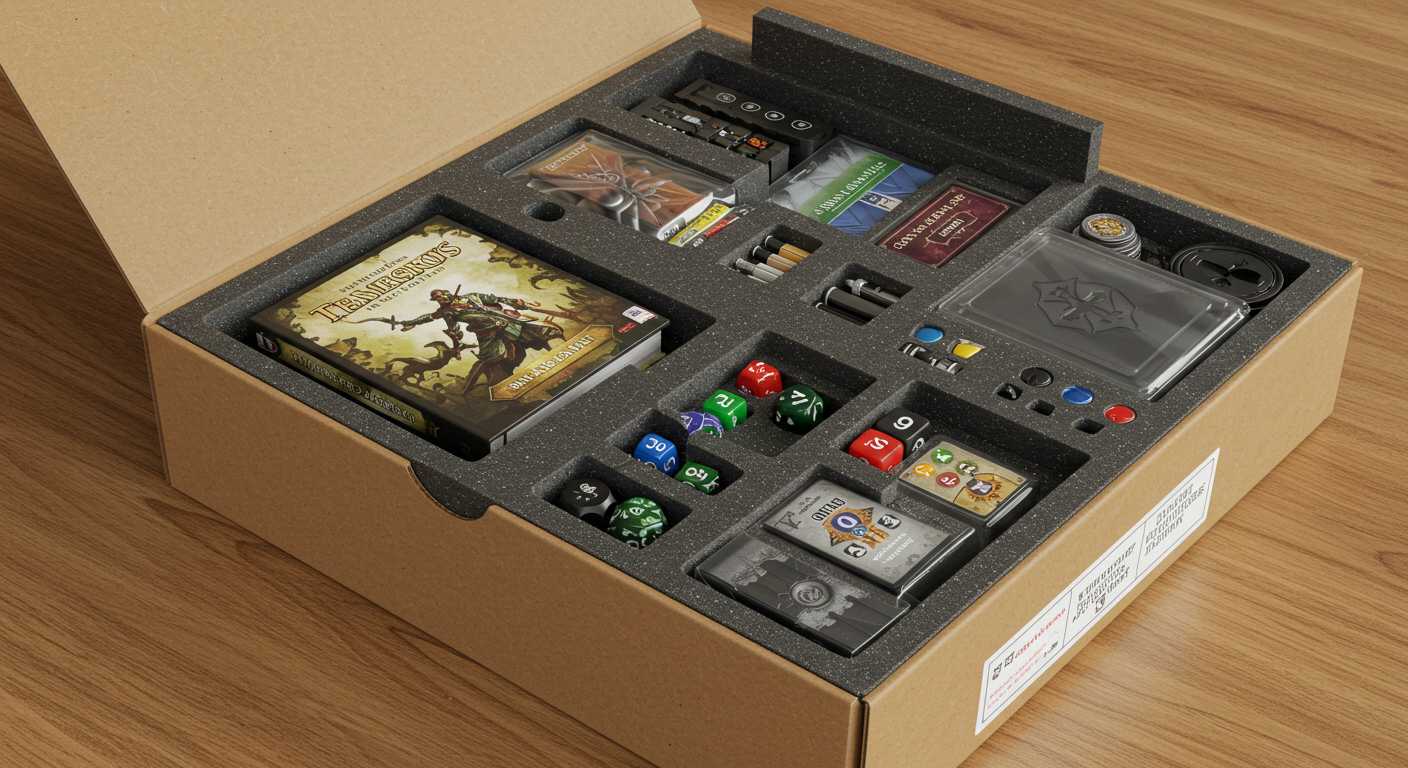
Protective Packaging: Surviving the Journey
Board games, especially large Kickstarter editions laden with miniatures and components, require robust packaging. Protection starts inside the game box itself; components should be secured using custom inserts, trays, or bubble wrap to prevent shifting and damage during transit. The game box lid should be securely fastened, often with shrink wrap, which also signals to the backer that the game is new and untampered with.
Externally, the game must be placed within a sturdy shipping carton. Any empty space (void) within the carton should be filled with appropriate dunnage – such as airbags, packing paper, or foam – to immobilize the game box and absorb impacts. For heavier or more valuable games, adding corner protectors to the shipping carton provides extra defense against drops and impacts.
Backers often have high expectations for protective packaging, especially for expensive Kickstarter projects, and can be disappointed by perceived carelessness. When shipping games in bulk from the manufacturer to fulfillment hubs, palletizing the cartons significantly reduces the risk of damage compared to shipping loose cartons via parcel carriers. Despite best efforts, some transit damage is statistically inevitable, reinforcing the need for clear customer service and returns policies.
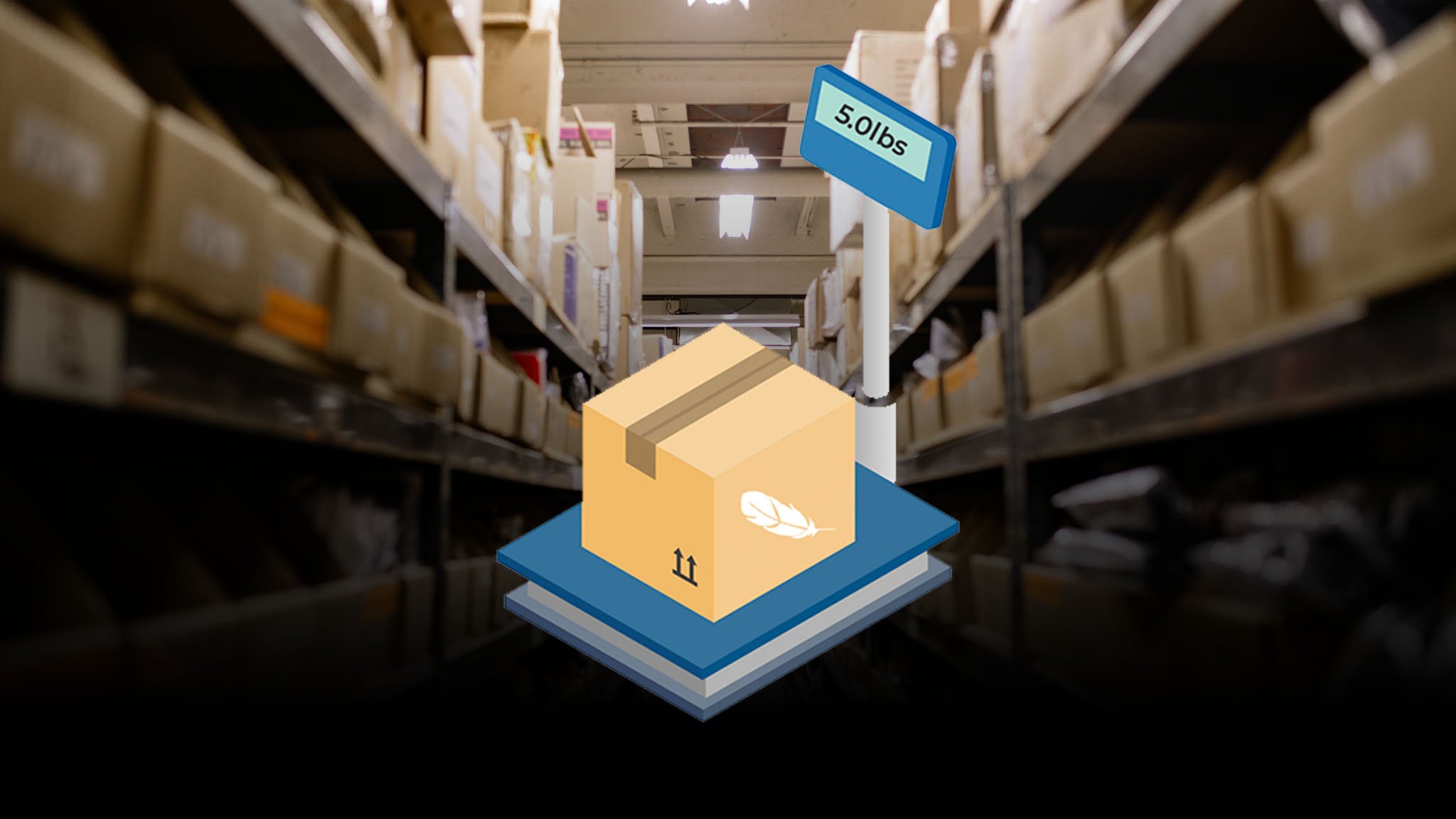
The Impact of Dimensional (DIM) Weight on Board Game Fulfillment
Dimensional weight (or DIM weight) is a major factor in determining shipping costs—especially for board games, which are often large but relatively lightweight.
Most carriers like UPS, FedEx, and USPS don’t just charge based on actual weight. Instead, they use DIM weight, which factors in the package’s size.
How DIM Weight Is Calculated
Carriers use the following formula:
DIM Weight = (Length × Width × Height) / DIM Divisor
-
Common DIM Divisors:
-
UPS/FedEx (daily rates): 139
-
USPS Retail Ground/Priority Mail: 166
-
They charge based on whichever is greater: the actual weight or the DIM weight.
Why It Matters for Board Games
-
Board games often come in large boxes with lots of air or filler space.
-
Even if the box is light, the shipping cost may be calculated as if it’s heavy due to its size.
-
This can drastically inflate shipping costs, especially for international backers or regional hub freight.
How to Reduce DIM Weight Costs
To avoid paying more than necessary:
-
Minimize game box dimensions wherever possible—without compromising protection or quality.
-
Optimize:
-
Component layout inside the box
-
Board folding methods (e.g., six-fold boards take up less space than bi-fold ones)
-
Use of fillers—remove any unnecessary internal space
-
-
Choose appropriately sized shipping cartons to reduce excess void space.
Plan Early with Partners
-
Talk to your manufacturer and 3PL during the game design phase.
-
Ask about:
-
Standard box sizes (like 300×300×80 mm)
-
DIM weight thresholds and shipping rate tiers
-
How your game box dimensions affect pallet loading for bulk freight shipping
-
Understanding DIM weight early helps you control costs across the entire fulfillment chain—from freight to last-mile delivery.
Common Fulfillment Pitfalls (and How to Avoid Them)**
Despite the excitement surrounding a funded Kickstarter, the path to delivering rewards is fraught with potential pitfalls. Many campaigns stumble during fulfillment, leading to frustrated backers, damaged reputations, and financial strain. Recognizing these common mistakes and implementing strategies to avoid them is crucial for navigating this final stage successfully.
Common Kickstarter Fulfillment Pitfalls & Mitigation Strategies
|
Pitfall |
Common Causes |
Consequences |
Avoidance / Mitigation Strategy |
|
Underestimating Costs |
Ignoring DIM weight/VAT/duties, inaccurate freight/3PL quotes, no buffer |
Budget shortfall, inability to ship, creator loss, backer anger |
Research all costs pre-launch, get firm quotes, use calculators, factor buffers, use pledge manager for final shipping charges.3 |
|
Logistical Delays |
Unrealistic timelines, manufacturing issues, freight/customs hold-ups |
Late delivery, backer frustration, damaged reputation |
Set realistic timelines with buffers, choose reliable partners, understand lead times, ensure compliance, communicate delays proactively.7 |
|
Poor Communication |
Lack of updates, unclear policies (VAT), poor partner coordination, ignoring backers |
Backer anger/distrust, fulfillment errors, negative publicity |
Regular/honest updates, clear policies upfront, strong partner communication protocols, responsive backer support.15 |
|
Fulfillment Partner Failure |
Poor vetting, inexperienced/unreliable 3PL, bad contract terms |
Damaged goods, wrong orders, excessive delays, hidden fees, project failure |
Thoroughly vet 3PLs (Sec 3), check references/reviews, clear contract, maintain communication, have contingency plans.4 |
|
Scope Creep / Poor Planning |
Unvetted stretch goals, too many SKUs, logistically complex add-ons |
Production delays, increased costs, kitting errors, backer inequality |
Plan stretch goals/add-ons pre-launch, assess feasibility/cost, keep rewards manageable, ensure global viability.2 |
|
Data Errors & Management |
Incorrect backer info, data transfer mistakes, poor integration, missing data |
Shipping errors, undeliverable packages, reshipment costs, delays |
Use reliable pledge managers, validate surveys/data, check formatting, test integrations, collect phone numbers.4 |

Pitfall 1: Underestimating Costs (Shipping, Taxes, Fees)
One of the most frequent and damaging errors is failing to accurately budget for the true cost of fulfillment. This includes underestimating:
- Shipping Costs: Both bulk freight from the manufacturer to hubs and last-mile postage to backers. International shipping and the impact of dimensional (DIM) weight are often significantly underestimated.
- Taxes & Duties: Failing to account for VAT, GST, and customs duties, especially when offering “friendly” shipping.
- Fulfillment Fees: Not fully understanding the 3PL’s charges for receiving, storage, picking, packing, kitting, and materials.
- Other Costs: Buffer for packaging materials, potential returns/reshipments, payment processing fees, and pledge manager fees. Setting the initial funding goal too low based on incomplete cost analysis is a related issue.
How to Avoid: Conduct thorough cost research before launching the campaign. Obtain detailed quotes from manufacturers, freight forwarders, and potential 3PL partners. Use online calculators and 3PL consultations to estimate shipping costs, paying close attention to DIM weight. Research and factor in potential VAT and customs duties for key regions. Build a contingency buffer (at least 10-15%) into the budget for unexpected expenses. Utilize pledge managers to collect accurate, location-based shipping fees (and potentially VAT) after the campaign.

Pitfall 2: Logistical Delays (Manufacturing, Freight, Customs)
Delays are common in Kickstarter, with 84% of projects reportedly delivering late, but excessive or poorly communicated delays erode trust. Common sources include:
- Unrealistic Timelines: Overly optimistic estimates for manufacturing, shipping, and fulfillment.
- Manufacturing Issues: Production problems, component sourcing delays, or quality control failures.
- Freight Delays: Slow sea freight transit times (2-3 months is typical), port congestion, container shortages, or other shipping disruptions.
- Customs Hold-ups: Delays due to inspections, incorrect paperwork, or compliance issues.
- Fulfillment Center Backlogs: Warehouses becoming overwhelmed, especially during peak seasons or if receiving multiple large projects simultaneously.
How to Avoid: Develop realistic timelines with built-in buffers for each stage. Work with reputable and experienced manufacturing and fulfillment partners. Understand typical lead times for sea freight and customs clearance. Ensure all compliance documentation (safety tests, import paperwork) is accurate and readily available. Most importantly, communicate proactively and transparently with backers about any unavoidable delays, explaining the reasons and providing revised estimates.

Pitfall 3: Poor Communication (With Backers & Partners)
Communication breakdowns are a major source of friction during fulfillment:
- Lack of Backer Updates: Going silent, especially when delays occur, breeds speculation and frustration.50 Providing vague or misleading information is equally damaging.50 Conversely, too many trivial updates can also annoy backers.
- Unclear Policies: Ambiguity regarding shipping costs, VAT/duty responsibility, or return policies leads to confusion and disputes.
- Partner Miscommunication: Lack of clear communication protocols with manufacturers or 3PLs can result in errors, missed deadlines, or unresolved issues.
- Ignoring Backers: Failing to respond to backer inquiries or concerns about their shipments.
How to Avoid: Establish a regular update schedule (e.g., monthly) and stick to it, providing honest and substantive information, especially regarding timelines and challenges. Clearly define shipping costs, VAT/duty policies, and other key terms on the campaign page and in pledge manager communications. Maintain open and frequent communication channels with fulfillment partners. Set up a system for promptly addressing backer questions and concerns.
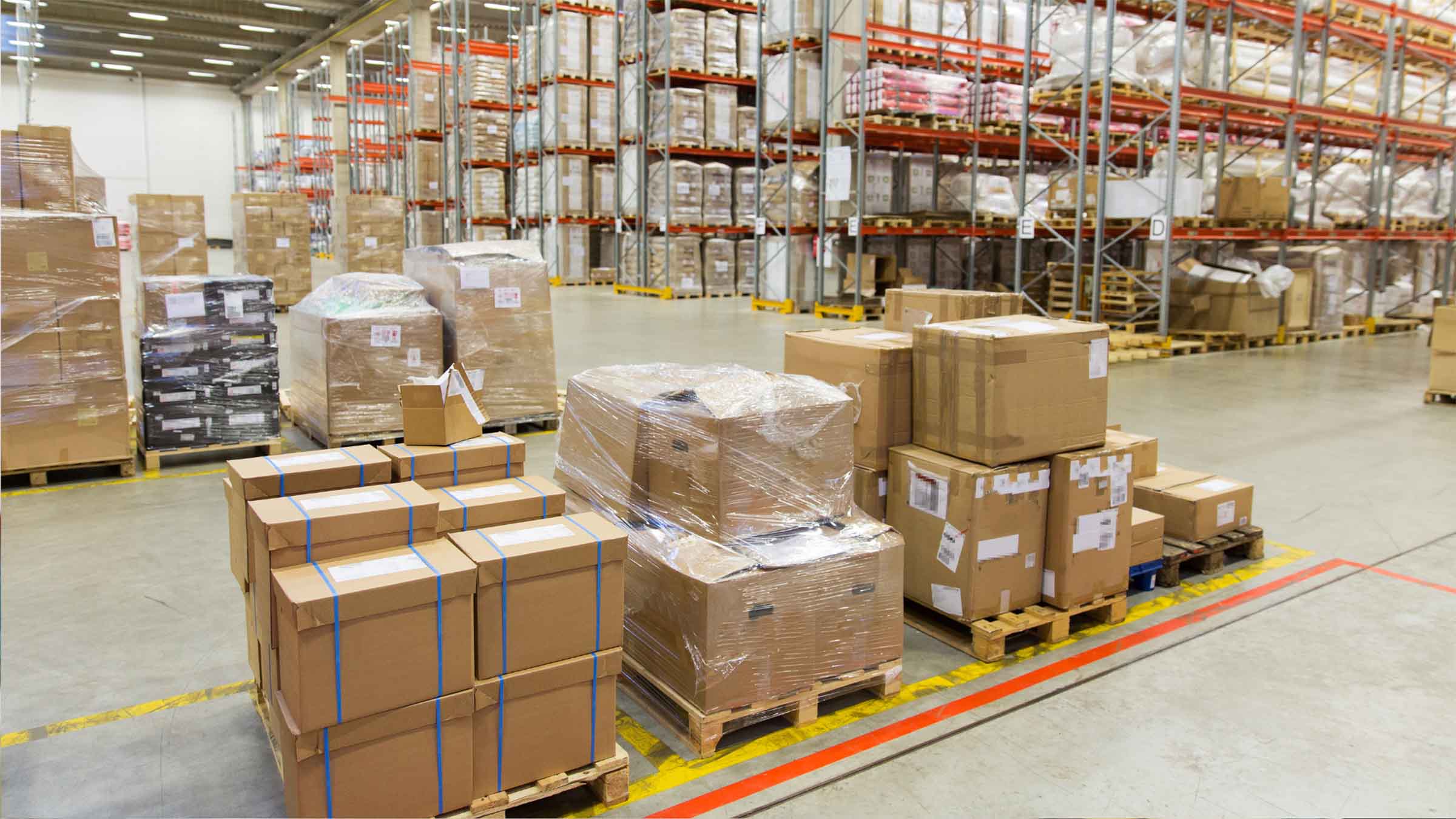
Pitfall 4: Fulfillment Partner Failures
Choosing the wrong 3PL can sabotage even the best-laid plans:
- Inexperience or Unreliability: Partnering with a 3PL that lacks experience with Kickstarter or board games, or has a poor track record.
- Poor Performance: 3PLs damaging goods during storage or packing, shipping incorrect items or quantities, experiencing significant internal delays, or exhibiting poor communication.
- Hidden Costs & Contract Issues: Encountering unexpected fees not outlined in the initial agreement, or restrictive contractual clauses (e.g., regarding future projects, or refusing to ship remaining items). Some fulfillment companies have gained notoriety for poor service and problematic contracts.
How to Avoid: Conduct rigorous due diligence when selecting a 3PL, using the criteria outlined in Section 3. Check reviews, testimonials, and request references. Ensure a clear, detailed contract is in place that outlines all services, fees, and responsibilities. Maintain open communication throughout the process. If possible, have contingency options in mind.
Struggling with crowdfunding managment?
Our 3PL services streamline your crowdfunding fulfillment process and boost profitability. Get a Free Quote and start improving your cash flow today!
How eFulfillment Service Help’s Kickstarter Creators Win
Navigating the complexities of board game fulfillment, avoiding the common pitfalls, and delivering a positive experience for global backers requires careful planning, robust processes, and, often, a reliable logistics partner. The challenges – from managing international shipping and taxes to ensuring accurate kitting and surviving the tyranny of dimensional weight – can quickly overwhelm creators, diverting focus from game development and community building. Finding a 3PL provider that not only executes flawlessly but also understands the unique pressures and dynamics of Kickstarter is key to success.
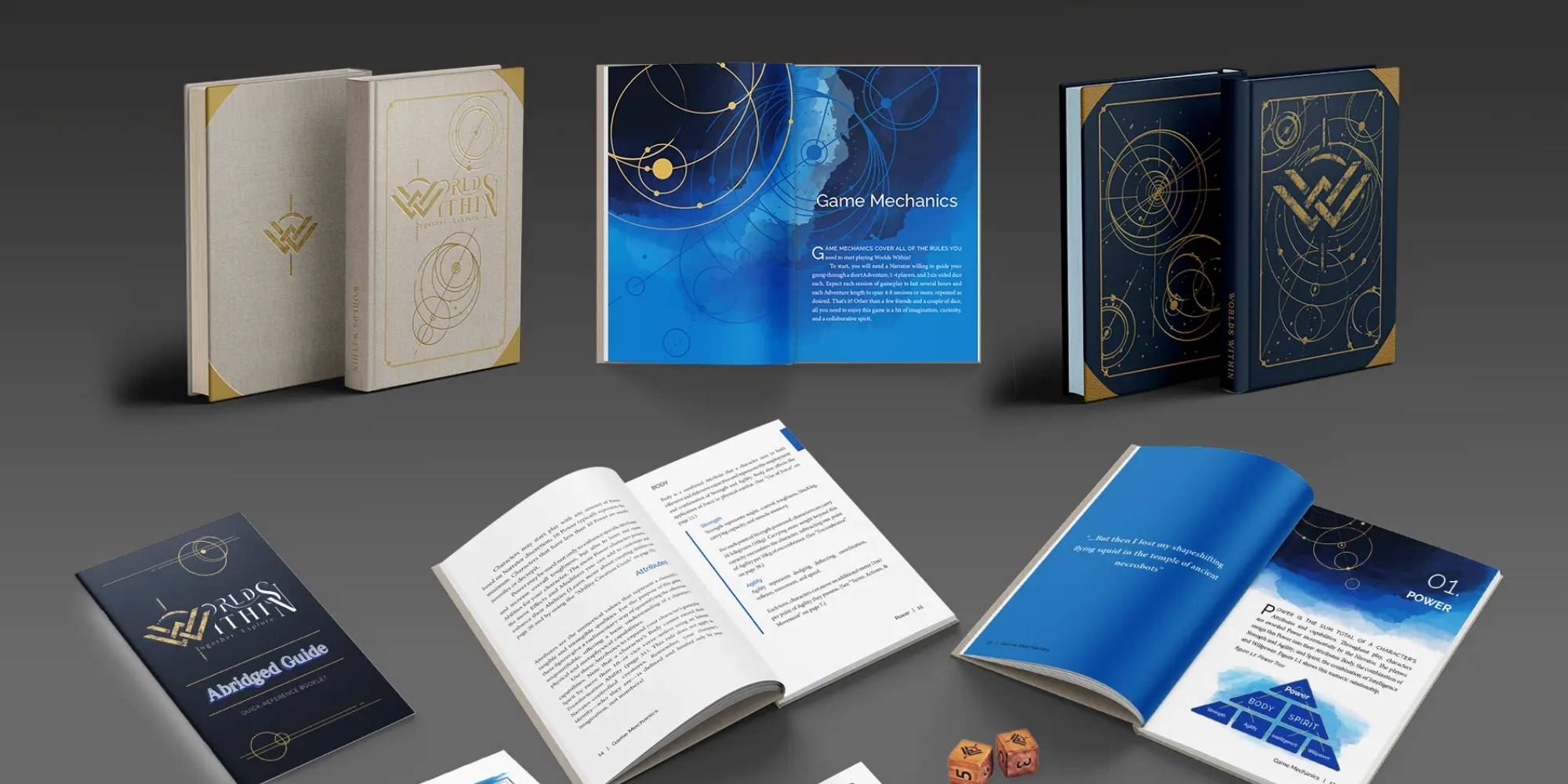
The experience of Worlds Within, a tabletop roleplaying game (TTRPG) company, vividly illustrates the difference the right fulfillment partner can make. Before partnering with eFulfillment Service (EFS), the Worlds Within team grappled with many of the common frustrations faced by Kickstarter creators:
- Unreliable Previous Partners: They experienced significant delays and poor communication from other fulfillment providers.
- Unexpected Costs: Fulfillment errors and subpar service led to unforeseen fees, straining their budget.
- Resource Drain: As a small team, managing logistics consumed valuable time and energy better spent on developing their TTRPG universe.
- Kitting Complexity: Their multi-component TTRPG system required precise kitting, which previous partners struggled to handle accurately.
- Lack of Transparency: Hidden fees and unclear timelines created operational stress and uncertainty.
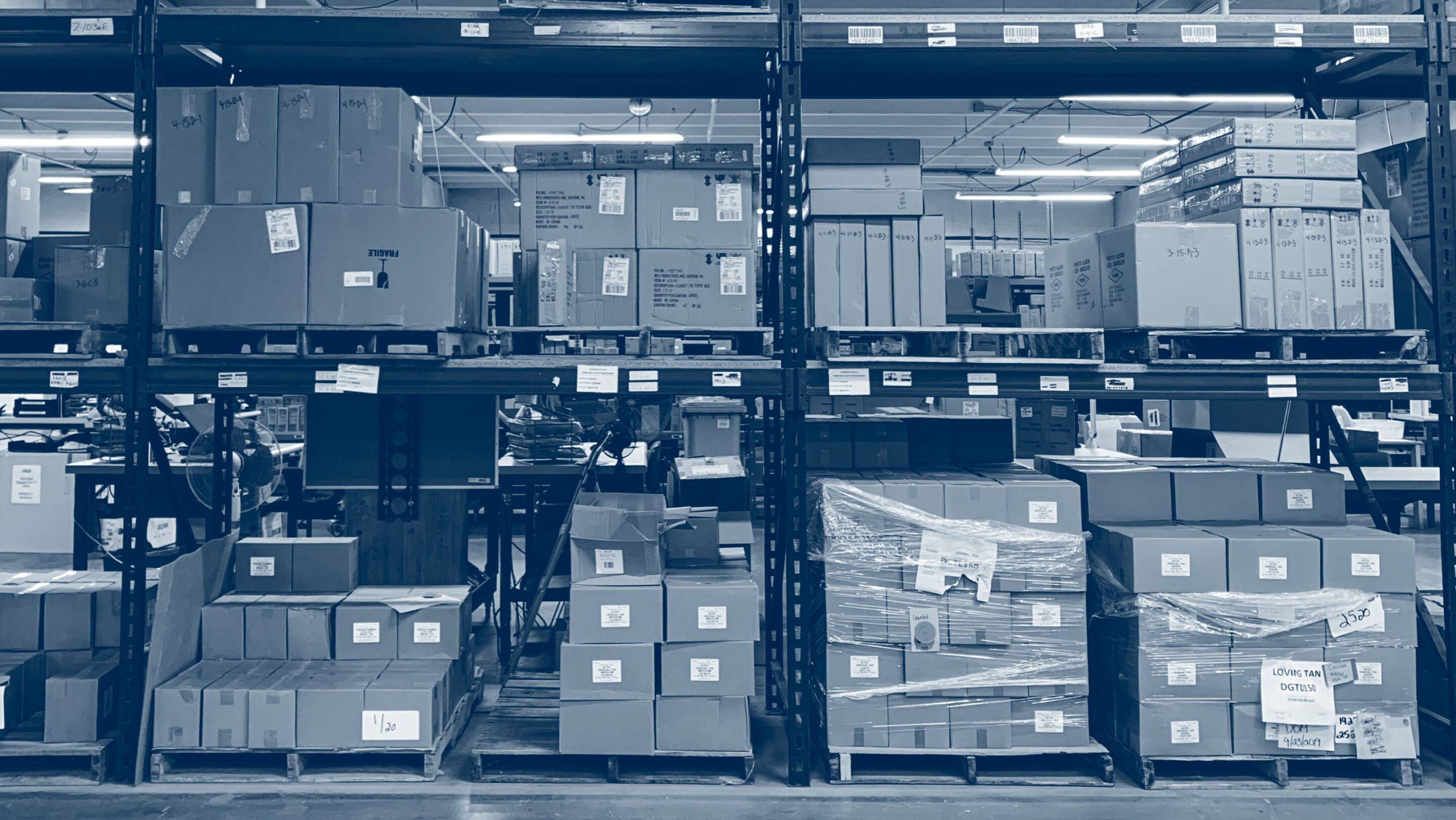
Partnering with eFulfillment Service transformed their fulfillment experience. EFS provided targeted solutions that directly addressed these pain points:
- Seamless Onboarding & Flexible Support: EFS guided Worlds Within through setup, understanding their specific kitting and packaging needs, and adapting processes accordingly.
- Proactive Communication: Clear, consistent updates and quick responses replaced previous communication breakdowns, keeping the Worlds Within team informed and confident.
- Expert Kitting & Quality Control: EFS implemented robust processes for accurately assembling Worlds Within’s multi-component orders, achieving a 99% accuracy rate and ensuring professional presentation.
- Transparency: Clear, upfront processes and pricing eliminated hidden fees and operational headaches.
- Going the Extra Mile: EFS demonstrated a commitment to partnership by proactively addressing external challenges and mitigating issues, sometimes waiving fees to support the client’s success.
- Technology & Scalability: EFS worked with Worlds Within to integrate their upcoming online marketplace for seamless, automated order processing and provided a scalable solution ready to support future growth.
The results for Worlds Within were significant. They gained a reliable, high-quality fulfillment operation, dramatically reducing operational stress and freeing up time to focus on their core business. Fulfillment accuracy soared, strengthening customer relationships and fostering loyalty. They gained peace of mind knowing logistics were handled expertly, and they established a scalable foundation for future expansion, including their independent marketplace. EFS acted not just as a vendor, but as a partner advocating for their success.
Ready to conquer fulfillment for your Kickstarter board game? Let eFulfillment Service handle the logistics so you can focus on your next creative success. Get a custom quote today and discover how a dedicated fulfillment partner can help you win.
Struggling with large amounts rewards to ship?
Our 3PL services streamline your crowdfunding fulfillment process and boost profitability. Get a Free Quote and start improving your cash flow today!
Summary: Kickstarter Board Game Fulfillment
Successfully navigating Kickstarter board game fulfillment is a formidable challenge, yet it is inextricably linked to a campaign’s ultimate success and a creator’s long-term viability. It demands far more than simply shipping boxes; it requires strategic planning initiated well before launch, meticulous execution across multiple complex stages, and transparent communication throughout.
Key takeaways from this analysis emphasize several critical areas:
- Early and Integrated Planning: Fulfillment considerations, particularly regarding packaging size (DIM weight) and international shipping logistics (customs/VAT), must be integrated into the game design and campaign planning process from day one to avoid costly donstream problems.
- The Critical Role of Partnerships: Choosing the right manufacturing and, especially, 3PL partners is paramount. Experience with Kickstarter and board games, global capabilities, robust technology, transparent pricing, and strong communication are essential criteria that often outweigh cost alone.
- Managing International Complexity: The global nature of Kickstarter necessitates proactive strategies for handling customs duties and VAT to provide “friendly” shipping and avoid surprising backers with unexpected fees, often requiring regional fulfillment hubs.
- Cost Control Through Optimization: Underestimating costs is a major pitfall. Accurate budgeting requires understanding all cost components, including freight, duties/VAT, 3PL fees, and the significant impact of dimensional weight on shipping rates.
- Communication is Key: Transparent, regular communication with both backers and fulfillment partners is vital for managing expectations, resolving issues, and building trust, especially when delays occur.
While the logistical hurdles are significant, particularly for inexperienced creators, they are not insurmountable. By investing in education, planning meticulously, leveraging the expertise of reliable partners, and maintaining open communication, creators can successfully navigate the complexities of fulfillment. Doing so not only ensures that backers receive their well-deserved rewards but also solidifies the creator’s reputation, fosters community loyalty, and lays the groundwork for future creative endeavors, transforming a passion project into a sustainable enterprise.
Take the Next Step: Need help with apparel fulfillment and inventory management?
Learn more about eFulfillment Service’s Kickstarter Fulfillment Solutions and how we help brands streamline operations from warehousing to delivery. By partnering with experts, you can spend less time worrying about dead stock and more time growing your business.
💡 eFulfillment Service specializes in helping eCommerce businesses scale without the headaches. Whether you’re managing one SKU or a few thousand, we provide the technology, automation, and expertise to keep your operations running smoothly.
📞 Ready to simplify your rewards fulfillment and focus on growth? Contact us today to see how we can help streamline your operations and improve efficiency.
Need help with fulfillment? eFulfillment Service specializes in flexible, multi-channel fulfillment, including Amazon FBA prep services. Contact us today for a free quote and see how we can streamline your operations!


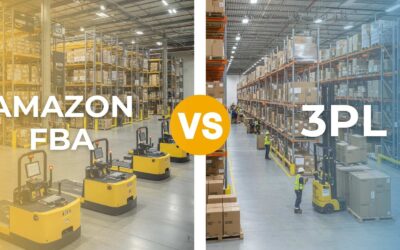

0 Comments